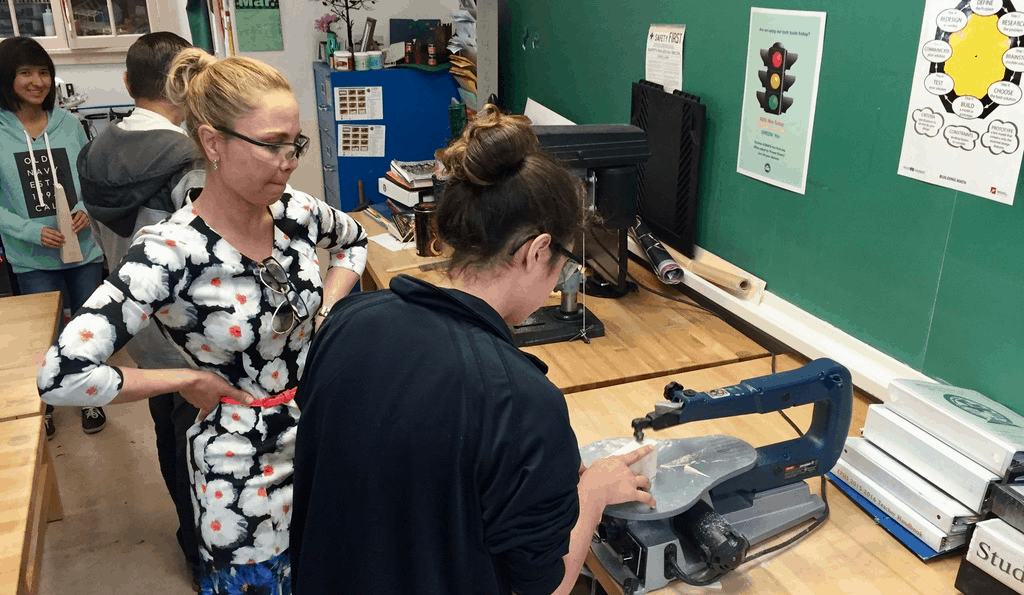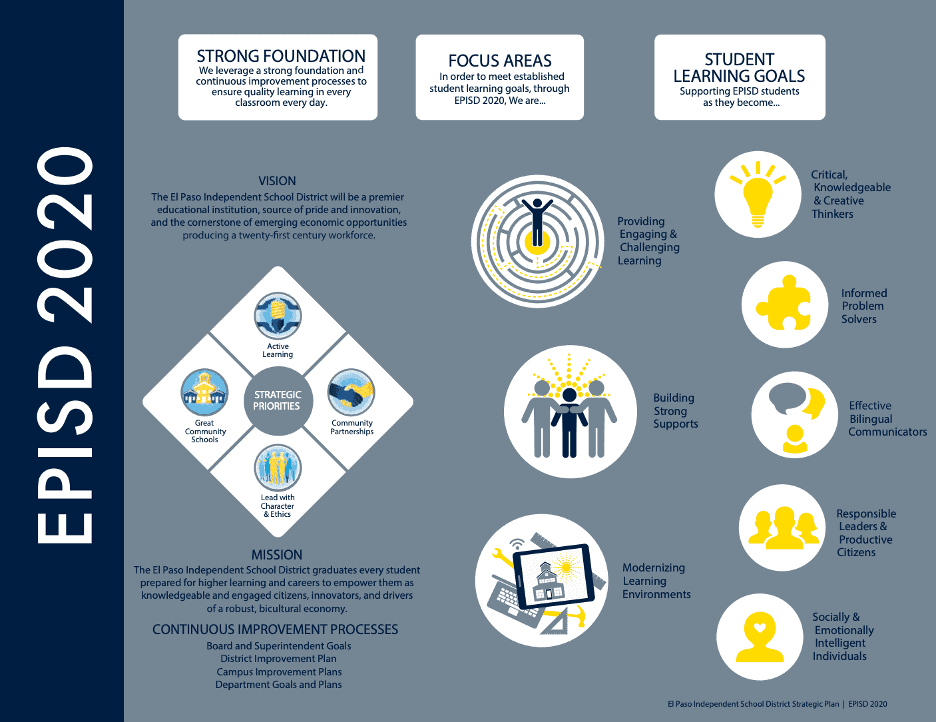Active Learning: The Secret to El Paso’s Success

“Active learning is how marginalized students gained access to meaningful learning. We want to do more, go deeper and double down on it,” said El Paso ISD Superintendent Juan Cabrera.
Active learning means engaging and authentic experiences focused on critical thinking and problem-solving in a blended environment. EPISD added a focus on social and emotional learning and dual language proficiency.
It began in 2013, with the appointment of an unlikely superintendent–a bilingual teacher turned lawyer and high tech exec, Juan Cabrera. In a district scared by a decade of test prep, then cheating and embezzlement, the new superintendent built a talented leadership team and a renewed sense of community that transformed the troubled district.
Cabrera empowered his team to view challenges through a lens of possibility rather than limitation. Their work has been instrumental in shifting the district of 86 schools from a preoccupation with test prep toward a focus on the whole child, engaging project-based learning, and effective dual language literacy instruction.
“The risk was TEKS [state test] alignment concerns, but we are doing fine with testing,” added Cabrera. “More kids have an engaging pedagogical environment without the drill and kill.”
“This is part of our DNA now–we are known for Active Learning, SEL, and Dual Language–we can do more in the next three years if we double down.”
These were articulated in EPISD 2020, a comprehensive strategic plan that incorporated community feedback and publicly reinforced the team’s commitment to a strong foundation for continuous improvement.

EPISD embarked upon the creation of a strategic plan in 2015, coincidentally named for the year in which it’d be most profoundly tested.
Results in El Paso have improved across the board: more engaged learners, improved test scores, higher graduation rates, improved college and career readiness, expanded dual literacy, and more learners in modern facilities. Teacher pay has been increased with strong professional development in Active Learning.
Leading in Adversity
School leaders around the world have collectively been grappling with myriad challenges since COVID-19 turned lives and routines upside down this spring. Creating order out of chaos comes with clarity of purpose, a can-do attitude, and the test of successive challenges.
The EPISD leadership team knows this intimately. The dynamic environment that they’ve built started in crisis, incorporated dramatic changes, weathered a mass shooting, and responded effectively to the pandemic with a smooth transition to learning at home.
Cabrera developed a talented, cohesive, collaborative female school leadership team: Dr Carla Gonzales is Assistant Superintendent for High Schools; Dr. Blanca Garcia and Nancy Tovar lead elementary schools; Angela Henderson is Assistant Superintendent for Middle School, and Anna Torres leads Accelerating Schools. Laila Ferris is Chief of Languages and Dr. Tamekia Brown is Chief Academic Officer.
Over the last three years, we’ve observed five leadership traits as the EPISD team worked through adversity and challenge.
1. Leaders exhibited humility, acknowledge needs, and sought out the best partner solutions. Where external partnerships would enable greater capacity building, they made those connections. They engaged New Tech Network to help jumpstart the strategy with 10 new academies and worked with engage2learn to scale Active Learning. They looked to other districts that had championed innovative approaches, like Houston’s PowerUp, and adapting it for their own expansion of student access to technology.
2. The team challenged the status quo– and encouraged others to do so as well. All instructional coaches at every school were required to reapply to become Active Learning Leaders. The district shifted from being organized in three areas to three levels (elementary, middle, and high school) which changed nearly all reporting relationships.
When the pandemic struck in March, Superintendent Cabrera told his team, “From today forward, we are half education, half social services–whatever these kids need you have my permission to put that hat on—be completely responsive to their needs.” The speed and quality of response to the pandemic meant that education shifted smoothly to remote learning and new support systems were quickly implemented.
3. They built a strong web of connections. In addition to strong communities of practice at each level, each high school feeder pattern developed strong leader relationships. The combination of horizontal and vertical connections contributed to the efficiency of the district’s response to COVID-19.
The district built a web of community connections including city services, nonprofit organizations, UTEP, and county health services.
4. They invested in priorities that reflect their principles. Big investments in teachers and professional learning helped attract and retain great educators. Teachers and parents also appreciate the investment in social-emotional learning staff and the focus on developing the whole child.
Investing in dual language district-wide has paid off with bi-literate learners. Language lead Laila Ferris also sees it as a unifying factor, “Dual language has brought people together that would otherwise not be united—it is perhaps the greatest gift from this program as it has helped maintain engagement in high-quality learning during COVID -19 response and also in our planning efforts for fall.”
5. They lead with character and ethics. “Mr. Cabrera’s focus on ethics and character was a driver for most of our success; it made us rethink the why and how of our work in the best interest of students and community,” said Carmen Arrieta-Candelaria, Deputy Superintendent for Finance and Operations.
Just as the district nimbly addressed its earlier challenges, Arrieta-Candelaria noted that recent events have ushered in a renewed focus on prudent fiscal management. “The situation with COVID-19 brought the need to reconsider use of spending and resources, as there will be huge implications in changing the way we work in a more virtual, automated format.”
By putting kids first, emphasizing active learning and embracing the local community, the district overcame a scandalous reset. It was the kind of scenario that could have defined their future for decades. Instead, they’ve rewritten it.
For more, see:
- From Test Prep To Active Learning: The El Paso Transformation
- Scaling Active Learning: Professional Development Was Key to the El Paso Transformation
- How New Tech Schools Jumpstarted El Paso’s Education Transformation
Stay in-the-know with innovations in learning by signing up for the weekly Smart Update.






0 Comments
Leave a Comment
Your email address will not be published. All fields are required.